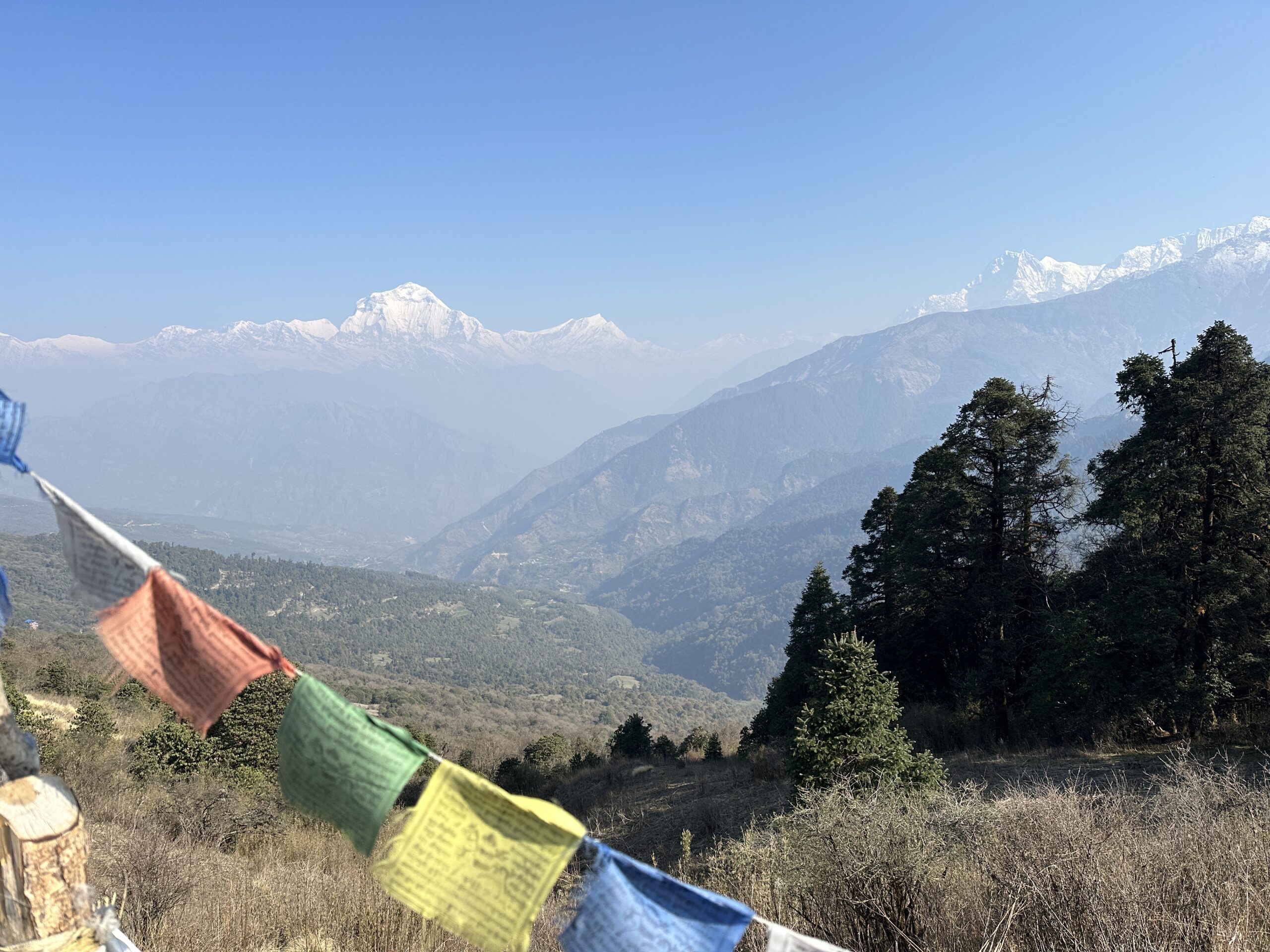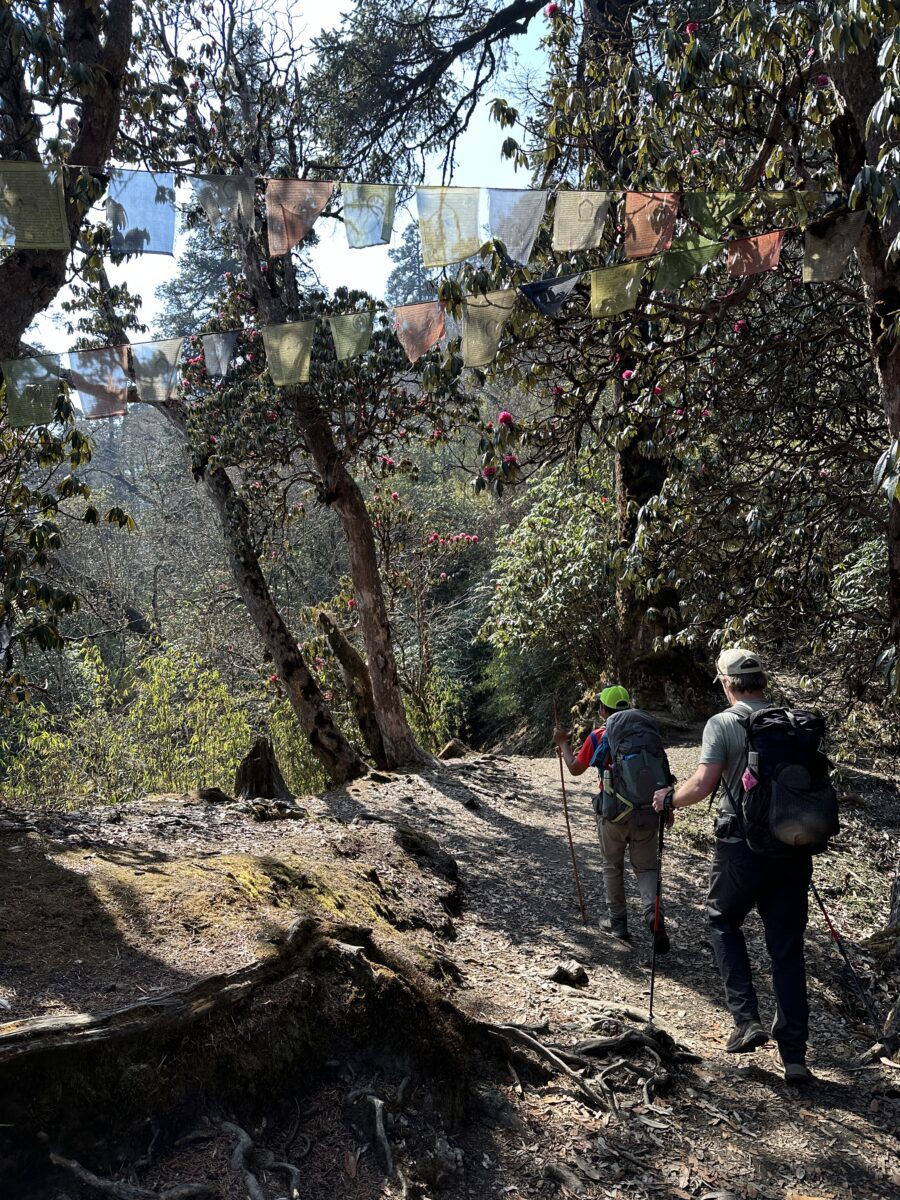Case Study: Altitude Illness While Trekking

The Setting
You are on the trip of a lifetime hiking the Annapurna Circuit in Nepal with one of your best friends. This trip has been in the works for over a year. You’ve spent countless hours training, reviewing maps, and daydreaming about being in the mountains. You can’t believe you’re finally here!
You flew into Kathmandu from your home in Seattle and enjoyed two days in the city before heading to the mountains. The planned route has you gaining elevation daily, reaching a peak elevation of 4,130m (13,550 ft) at Annapurna Base Camp.
It’s currently day 4 of your 9-day trek. You woke up in a tea house and are enjoying a hot drink when you realize your friend still isn’t up. Surprised by his tardiness, you decide to check on him. As you enter your bunk room, you see your friend still lying in his sleeping bag. You ask if everything is okay, and your friend replies that he is not feeling well.
Your wilderness medicine spidey senses go off, and you think a quick patient assessment is in order.
SOAP Report
Subjective
The patient is a 35 year old male whose chief complaint is a headache. There is no mechanism of injury and the patient is currently A+Ox4.
Objective
Patient Exam: The patient was found lying in his sleeping bag. No injuries were found on the patient exam. The patient did not lose responsiveness and has intact CSM in all four extremities.
Vital Signs
| TIME | 0630 |
| LOR | A+Ox4 |
| HR | 100, strong, regular |
| RR | 22, regular, easy |
| SCTM | pink, warm, dry |
| B.P. | radial pulse present |
| Pupils | PERRL |
| T° | Not taken |
History
| Symptoms: | The patient states he has had nausea, loss of appetite, fatigue, and a headache for the last 24 hours. The headache is worse this morning. |
| Allergies: | The patient states he is allergic to pineapple. He hasn’t had any exposure to pineapple. |
| Medications: | The patient states he took 400mg of Ibuprofen at 2 am for his headache. He denies taking any other medications. |
| Pertinent Hx: | The patient states that he has never hiked at this altitude before and denies any significant medical history or breathing problems. |
| Last in/out: | The patient states he had a minimal dinner last night and roughly 3 liters of water hiking yesterday. He’s had a few sips of water today and nothing to eat. The patient reports he has urinated recently a “normal amount.” The patient says he defecated yesterday and it was unremarkable. The patient says he has not vomited. |
| Events: | The patient states he has not felt well for the last 24 hours. He feels even worse this morning, especially with his headache and overall fatigue. |
What is your Assessment and Plan? Think about this before moving to the next page.

Assessment
- Possible altitude illness.
- Possible inability to travel.
- Possible unknown illness unrelated to altitude.
Plan
- Spend the day resting and see if symptoms improve or decline.
- If symptoms don’t get better, begin to descend to a lower elevation.
Anticipated Problems:
- Illness could worsen, and evacuation could be challenging.
Comments
Altitude illness results from insufficient oxygen in the blood secondary to decreased barometric pressure at altitude. The three main types of altitude illness are Acute Mountain Sickness (AMS), high altitude cerebral edema (HACE), and high altitude pulmonary edema (HAPE). Acute mountain sickness is a group of signs and symptoms that occur in unacclimatized people after rapid ascent to altitude. Both HAPE and HACE are severe altitude illnesses.
Symptoms of Acute Mountain Sickness include:
- Headache with one or more of the following:
- Nausea and/or possible vomiting
- Loss of appetite
- Mild lassitude, fatigue, or weakness at rest
- Insomnia
- AMS is managed by stopping ascent. Don’t go up higher until signs and symptoms start to resolve. If there is no improvement in 24-48 hours, it’s wise to descend to a lower elevation, ideally where there weren’t any symptoms of acute mountain sickness before. If there are any signs of severe altitude illness, descend immediately.
Signs and symptoms of HACE include ataxia (loss of balance), changes in mental status, headache, and other neurological signs and symptoms (vision changes, hallucinations, seizures, etc). If you suspect someone has HACE, descend immediately.
HAPE signs and symptoms include decreased ability to exercise, shortness of breath at rest, increased HR and RR at rest, pale or cyanotic (bluish) skin, wet lung sounds, and/or a productive cough. If you suspect someone has HAPE, descend immediately! If you have access to oxygen, administer this to the patient.
We can reduce the chance of altitude illness by slowly gaining elevation. Taking frequent rest days, maintaining adequate hydration, and avoiding alcohol and sedatives can help our bodies adjust.
What Happened?
You are grateful that you did an assessment of your friend. Based on the results, you decide that a rest day is in order. You spend the day hanging out at the tea house, enjoying the beautiful scenery, and talking with other trekkers from around the world. As the day progresses, your friend starts to feel better. You plan on reevaluating the situation again tomorrow morning. If your friend is feeling better, you may continue your trek. If he’s still feeling crummy or feeling worse, you will start heading down the valley to a lower elevation.
Topics: NOLS, Wilderness Medicine

